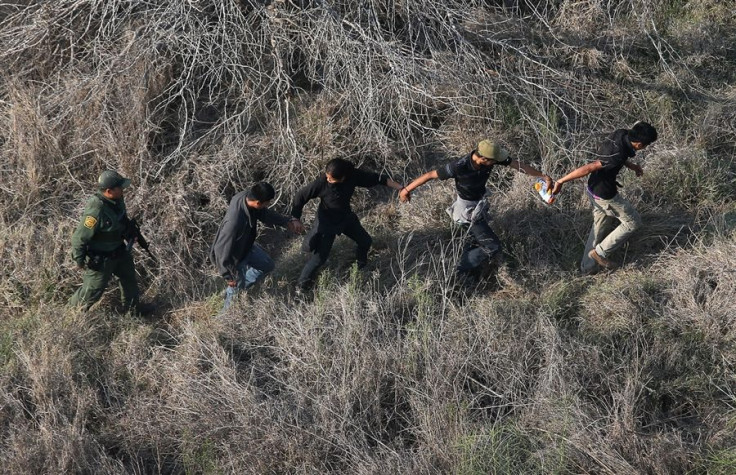
As violence continues to plague Central America, U.S. Citizenship and Immigration Services (USICS) is registering its effects. Through the end of May, the branch of U.S. immigration authorities, which handles requests for asylum and citizenship, has seen more than 19,119 requests for asylum and anticipates more than 28,600 by the end of the fiscal year, according to the Associated Press. The majority of those requests have come from citizens of El Salvador, Honduras and Guatemala, where many are fleeing gang violence related to the drug trade.
RELATED: Over 4.4 Million Legal Immigrants Stuck In Backlog
USCIS Associate Director Joseph Langlois described the asylum petitions as "credible fear" claims and says most of them were submitted in the Rio Grande Valley in South Texas: 12,400 requests from that region in total, compared to about 3,400 in 2009. The Rio Grande Valley has turned into one of the trafficked zones along the border among those who would try to brave an illegal crossing. And more and more common among that crowd are Central Americans from those three countries. According to the Washington Post, of the 365,000 arrests made by the US Border Patrol during fiscal 2012, almost 100,000 were classified as "other than Mexican," the highest percentage to date. Most of that group hailed from the three countries of the Northern Triangle.
RELATED: Obama To Talk Immigration On Spanish-Language TV
Much of that exodus owes to the apparent helplessness of the region's governments in the face of gang violence. There are an estimated 900 gangs, with 70,000 members, working as narco-traffickers or hit men for organized drug gangs, according to the UN Office on Drugs and Crime. Two rival gangs, the Mara Salvatrucha and Barrio 18, are responsible for much of it in El Salvador and Honduras. A March 2012 truce between them helped bring murders down from an average of 12 per day to five, but that truce proved unstable. In El Salvador, 16 people were being killed a day in July of this year, according to Reuters.
RELATED: US To Resume Flying Deportees To Mexico City; What Did They Do Before?
The United States government has been putting pressure on Mexico to tighten up security along its southern border with Guatemala, which last year saw some 200,000 Central Americans crossing illegally. With U.S. funding and technology, Mexico is planning to mimic the United States' own border-security efforts, building checkpoints and a database of biometric data of the undocumented immigrants it detains.
The AP writes that asylum seekers' prospects may not be very bright. Since 2003, the U.S. has granted an average of 11,890 annual requests, with only 5,927 of them coming from Honduras, El Salvador and Guatemala.
© 2025 Latin Times. All rights reserved. Do not reproduce without permission.




